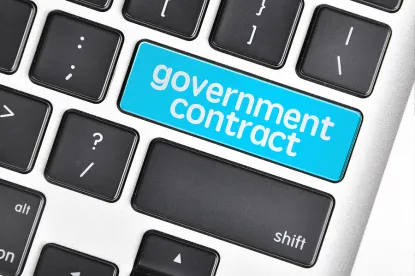Just as you’re probably tired of reading COVID-19 articles, we’ve grown tired of writing them. So, in an effort to party like it’s 2019, we’ve decided to survey the non-COVID-19 initiatives underway at the General Services Administration (“GSA”) while everyone is working from home. Our survey shows progress continues on Multiple Award Schedule (“MAS”) modifications, a new Verified Product Portal (“VPP”) is on the horizon, and work related to Sections 846 and 889 conSetinues to progress. Obviously, none of these has anything to do with COVID-19, but they will have an impact on your Federal business, whether you’re working from home or (eventually, and soon we hope) back in the office. Here’s a look of major projects GSA has been working on while you’ve been social distancing.
Section 846 E-Marketplace Initiative
GSA announced the award winners of its initial E-Marketplace Initiative program on June 26, 2020. This project, mandated by Congress in Section 846 of the FY’18 National Defense Authorization Act (“NDAA”), is intended to enable federal buyers to take advantage of existing commercial e-commerce solutions to make lower dollar acquisitions of commonly used items. Amazon, Overstock.com, and Fisher Scientific all won awards. Supporters hope that the pilot will speed the acquisition of such products, reducing acquisition times and freeing contracting officers to work on more complex projects. Others, however, are concerned that the project will negatively impact small businesses, some GSA Schedule contractors, and the Ability One program. Federal agencies already use commercial e-commerce sites, but the GSA project is intended to ensure that such users get better pricing by using the business-to-business sites of such companies and the enhanced data analytics that come with them. Expect e-marketplace portals to begin rolling out during the fourth quarter in time for at least part of the federal busy season.
Schedules Consolidation Project
Over two-thirds of GSA Schedule contractors have agreed to the mass modification incorporating the new terms and conditions of the unified Schedule solicitation into their contract. In their predecessor Schedule contracts, many contractors took exceptions to standard terms and conditions (e.g., definitions of what triggers the Price Reductions Clause, how the Basis of Award Customer is defined, prompt payment discounts, and labor escalation rates). By accepting the unified schedule mass modification without careful review and negotiation, many contractors may have allowed GSA to change fundamental terms and conditions of their Schedule contracts without them realizing the damage they have done to themselves. Regardless of whether your company already has accepted the modification, the terms and conditions of the unified Schedule will have an impact on how you manage the contract and ensure compliance. If you have not yet accepted the mass modification, you still have time to negotiate new contract terms – adoption isn’t required until July 31, 2020.
Verified Product Portal
GSA recently announced the establishment of a Verified Product Portal (“VPP”). The VPP is intended to be a manufacturer- and wholesaler-facing portal through which such companies provide standardized part numbers, manufacturer names, specifications, Country of Origin (“COO”), and other information to GSA. The agency hopes that the portal will lead to the use of standardized product and part numbers and ensure that companies selling them are authorized to do so. The agency’s intentions are good, but manufacturers and wholesalers that don’t sell directly to the Federal Government should proceed carefully when considering participation in the VPP. Participating in the VPP does not constitute a contract between the supplier and the government. There are no protections, therefore, on how the information will be used or what happens if the data provided is inaccurate or becomes outdated. One theoretical cautionary tale comes to mind – say a manufacturer provides COO information about where a part or product is made, but that production shifts to a non-designated end country (as a non-contractor your firm may not know what that means). If GSA’s VPP isn’t updated, there is a real potential for a False Claims Act case (and at least one Federal Judge has pondered openly why more manufacturers aren’t included as parties in False Claims Act cases against resellers).
It’s not just the federal enforcement community that could catch the problem, either. There are professional whistleblowers who regularly review COO information to catch an unwary company supplying inaccurate or outdated information, who then cash in on any subsequent government recovery. Manufacturers and wholesalers should carefully consider participation in the VPP, ask plenty of questions, and get the answers in writing before deciding whether or not to participate.
Integration of Section 889 – Prohibited Telecommunications & IT Equipment
While some contractors may be aware that they cannot sell “covered telecommunications and IT equipment” from firms such as Huawei and ZTE to the federal government, a larger ban on the internal use of these products by contractors is scheduled to go into effect this August. Recently, however, the Department of Defense signaled that it may delay implementation for a year to give companies impacted by COVID-19 more time to integrate necessary changes into their supply chains. In addition, the Pentagon says that it will now use a risk-based approach to implementation that would put increased emphasis on eliminating banned technology from sensitive parts of the DOD supply chain. Further, the rule to implement Section 889 Part B has been under review by the Office of Information and Regulatory Affairs for quite some time. This is a further indication of the “Gordian Knot” of supply chain implications the requirement could have for DOD contractors. Regardless of timing, all contractors doing business with the DOD need to familiarize themselves with “Part B” of Section 889.
While DOD has acknowledged that it can’t be everywhere at once to police contractors, the same cannot be said of whistleblowers. Indeed, it is expected that whistleblowers will be the first line of enforcement for these provisions. Companies need to understand the risk to their business and develop risk mitigation strategies now. Don’t do business with DOD? That just buys you some time. Coming soon will be similar prohibitions on the use of banned technology for federal civilian agencies.
Growth of OASIS, Silence on Alliant II for Small Businesses
GSA’s professional services OASIS contract continues to grow both in terms of dollar sales and participating small business contractors. Sales on OASIS continue to outpace growth on the GSA’s Professional Services Schedule (“PSS”) and may eventually overtake that contract’s approximately $10 billion annual sales figure. OASIS is in the process of adding hundreds of new small businesses to the OASIS small business contract from a recent on-ramp open window. GSA anticipates completing most of the on-boarding by the end of June, just in time for the busy federal fourth quarter. Further, GSA’s OASIS team recently announced initiatives to work more closely with the PSS team to form a unified GSA offering of professional services and outreach to specific federal agencies to grow sales. The wide array of offerings, large number of companies, ability to acquire services via cost-plus contracts, and a competitive contract access fee are all likely to make participation as an OASIS prime or subcontractor a high priority for any company selling professional services to the federal government.
At the same time, however, GSA’s Alliant II Small Business contracts appear to be stuck in the mud. The Alliant contract, for IT solutions, is popular overall and business does continue to flow through the program. GSA’s intended ramp-up of small businesses, however, hasn’t materialized for a variety of reasons. The agency has yet to be able to move past a host of protests filed over a year ago over alleged discrepancies on how awards were determined and whether or not those decisions were consistent with the evaluation criteria set forth in the solicitation. Internal struggles seem to have beset the program, as well, with some senior managers departing. Adding to contractor frustration is a near-total lack of communication on what the agency intends to do next, or when. GSA leadership recently told the Federal News Network only that communications would be forthcoming in a June timeframe. This is uncharacteristic of the agency and leaves a cloud over Alliant II entering into the busiest time of year for sales activity.
Conclusion
Despite the COVID-19 pandemic, the work underway at GSA is a clear indication that Federal Government contracting never sits still. Contracting practices, Federal agency priorities, people, and market practices change frequently. It is essential that contractors stay engaged in these changes and understand the impact developments can have on their business. Your company made an investment in becoming a government contractor. Staying on top of changes such as these helps protect that investment.
Co-Authored by Larry Allen, Allen Federal Partners



 />i
/>i